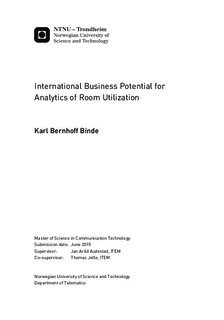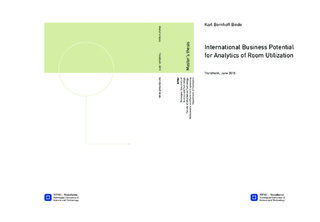| dc.description.abstract | Many universities worldwide have large campuses which they are trying to maintain and administer in the best way possible. Their infrastructure often includes numerous auditoriums with access to the Internet by the Wi-Fi standard. MazeMap and Cisco have developed a solution which can geographically track Wi-Fi clients within a building. This solution makes it possible to count the number of people in a room through depersonalized data. On an international level, the student numbers are increasing and many space and timetable managers are struggling to find enough lecture halls for their students. The occupancy status of a room at any given time can thus be crucial information for them.
This thesis aims to find the international business potential for the Wi-Fi analytics service from MazeMap. The technological solution has some limitations, and they are assessed with emphasis on their commercial impact. In order to investigate the business potential, a global space management survey has been conducted and the market has been investigated. The survey received 60 responses. In the results, 61.7% of the institutions had shortages of larger lecture halls and 35.6% were struggling with the efficiency of use. 13.3% were willing to pay an annual subscription fee of more than $35,000 for a solution that could help them optimize their utilization by 20%. There was a correlation between the willingness to pay and space shortages. The investigation found that the utilization rates predicted by scheduled lecture hours were higher than the actual rates in many cases.
After contributing to the survey, one British university made an enquiry for more information about the service, and stated that they were looking for such a service. They further indicated that they could be interested in participating in a pilot project. The British market showed the more promising results, while Australia, Canada and Switzerland share some characteristics and findings which could indicate a similar demand. Based on the findings and results, a business model proposal was built. The model includes bundling and possible integration with timetable systems, and was designed with the Business Model Canvas. | |

